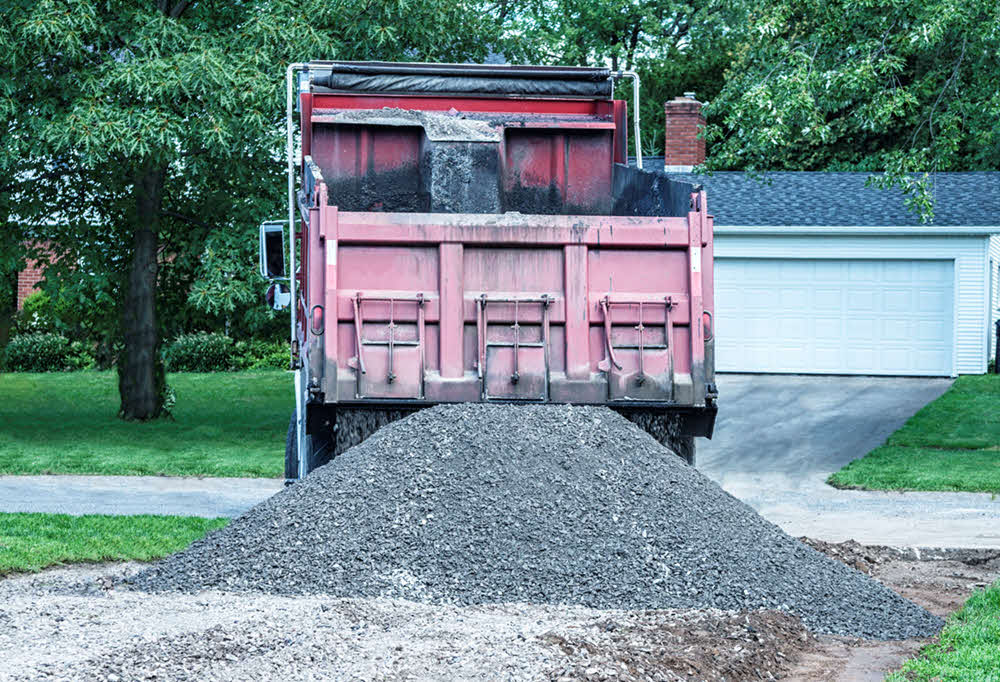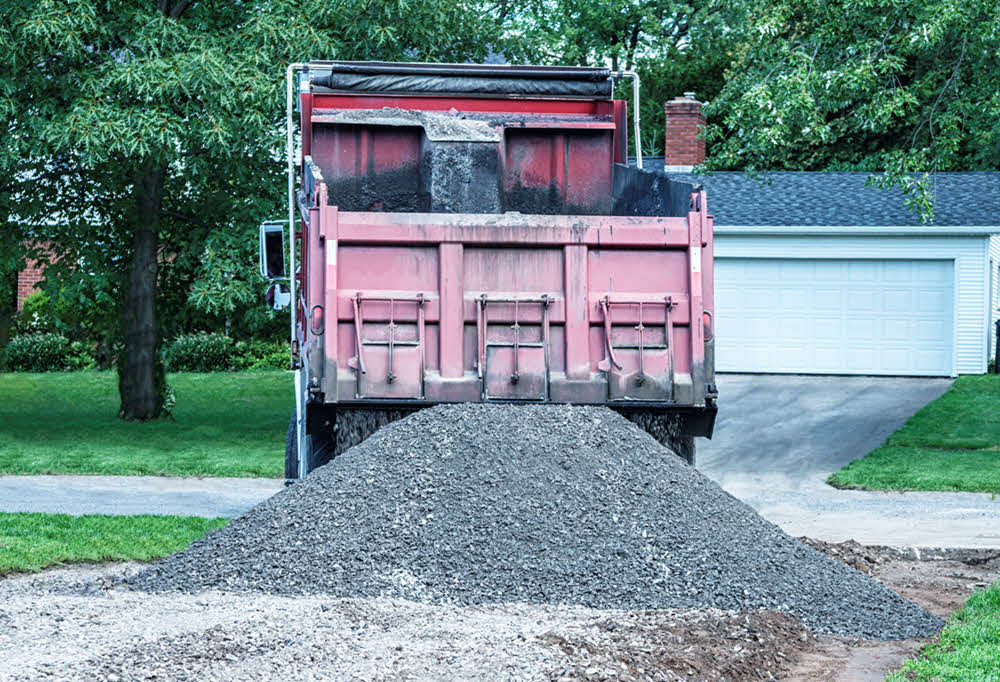Heavy Hauling Truckingin Madison Heights MI
Heavy Hauling Expertise for Your Largest Transport Needs
We Are Locally Owned & Operated For Over 37 Years
Contact Us Today!
We Serve Businesses In And Around The Following Cities:
About Heavy Hauling Trucking
Introduction to Trucking in Madison Heights
Madison Heights, a bustling city located in the heart of Michigan, is a hub for commercial enterprise, boasting a varied landscape of businesses, industries, offices, and retail spaces. Alongside these commercial buildings thrives a vital yet often overlooked service: trucking. In this article, we will delve into the comprehensive intricacies of commercial trucking in Madison Heights, discussing processes, benefits, real-world applications, and how businesses, like D&J Contracting, are making a substantial impact.
Understanding the Process
Commercial trucking is not just about transporting goods or materials across city lines. It involves a series of activities, starting from preparing the truck for loading and unloading goods to negotiating city traffic and operating within logistical constraints. For instance, consider a construction haul truck engaged in bulk cement hauling for a construction site. The process begins with loading the cement into the truck using specific machinery, transporting the material safely to the destination, and ensuring its proper unloading. Construction debris hauling services, such as D&J Contracting, are experts in efficiently carrying out these operations.
Benefits of Commercial Trucking
Commercial trucking services particularly prove their mettle in instances like backyard debris removal or when there is a need to haul away yard waste near you. Besides playing a critical role in operations like hauling concrete debris, such services offer several benefits. They can help to streamline operational efficiency, ensure business continuity, mitigate logistical hurdles, and maintain a cleaner environment. D&J Contracting, for instance, provides services from haul away landscaping to hauling away scrap wood, playing a crucial role in keeping Madison Heights’ commercial properties pristine and hazard-free.
Local References and Real-world Applications
Zooming into the local landscape of Madison Heights, commercial trucking has far-reaching real-world implications. For instance, after a demolition job, businesses may have to deal with the aftermath of scattered rubble, broken glass, or twisted metal. Here’s when demolition haul away services come into play, effectively transforming a chaotic work site into a clean, ready-for-business commercial property. Similarly, fall season might leave Madison Heights’ corporate parks strewn with fallen leaves. A convenient solution? Employ trucking services that haul away leaves, ensuring regular upkeep of the commercial landscaping.
Integration of Trucking Services
As easy as it sounds, there might arise situations where hauling your own concrete near you is not feasible due to a lack of equipment or time constraints. Hiring professional services like D&J Contracting for your haul waste services can save not just time but also resources, enabling companies to focus on their core operations. Innovation in the trucking industry also provides options like material hauling, from heavy equipment to light furniture, enabling businesses to manage their logistical needs effectively.
The Ecosystem of Trucking Services
The value provided by trucking services extends beyond commercial boundaries too; they form an integral part of our neighborhood ecosystem. They assist residents during house renovation or clearing out old furniture, offering options to haul away tree debris or haul away lawn debris. These services ensure commercial and residential spaces alike maintain a clean and green environment.
Wrap-up on Trucking in Madison Heights
If you stroll down the streets of Madison Heights, it’s hard not to notice the trucks busily navigating their way through the city’s heart. From material hauling to managing backyard debris removal or haul your own concrete services, the significance of trucking in the city’s commercial ecosystem stands unmatched. As businesses like D & J Contracting prove, trucking services not only hold the commercial threads of a city together but also contribute to a city’s clean, green, and organized visage.
Whether you’re a business owner seeking efficient construction debris hauling services or a homeowner looking for help to haul away scrap wood, recognizing the value of professional trucking services is the first step. So, next time when you think of “haul waste services near me”, remember that Madison Heights’ commercial properties rely on trusted businesses, such as D & J Contracting, to keep the city moving.
Heavy Hauling Trucking Gallery


Call Us Today to receive your Free Quote for
Trucking in Madison Heights
Serving: Madison Heights, Michigan

About Madison Heights, Michigan
Originally part of Royal Oak Township, Madison Heights incorporated as a city by popular vote on January 17, 1955, and chartered on December 6 of that same year, becoming the tenth city government in southern Oakland County. At that time, the 7.2 square miles (18.6 km) city was one of the largest suburban communities in the Metro Detroit area. The first city hall was at 26305 John R Road, the former township offices. On April 5, 1963, a new municipal building was dedicated which is on the present location at 300 West Thirteen Mile Road. The city lies in the Interstate 696 (I-696) and I-75 corridor and is served by two primary school districts, Lamphere and Madison, as well as a full-service municipal government.
According to the United States Census Bureau, the city has a total area of 7.09 square miles (18.36 km), all land.
Although 91% of the buildings in Madison Heights are single-family homes or condominiums (approximately 9,800 residential property owners), 60% of the tax base is fueled by light industrial or commercial property. The city has 15 voting precincts, totaling more than 21,000 registered voters.
Madison Heights shares borders with Troy to the north, Royal Oak to the west, Hazel Park to the south, and Warren to the east. The eastern border of Madison Heights (Dequindre Road) is also the border between Oakland and Macomb counties.
There are more than 112 miles (180 km) of road within Madison Heights, of which the city maintains 105 miles (169 km), 95 miles (153 km) for snow removal, sweeping, and patching. Interstate 75 passes north to south on the west side of the city, and Interstate 696 is the major feature of its southern border. The junction of these two highways is shared with Royal Oak and Hazel Park on the southwest corner of Madison Heights.
| Census | Pop. | Note | %± |
|---|---|---|---|
| 1960 | 33,343 | — | |
| 1970 | 38,599 | 15.8% | |
| 1980 | 35,375 | −8.4% | |
| 1990 | 31,296 | −11.5% | |
| 2000 | 31,101 | −0.6% | |
| 2010 | 29,694 | −4.5% | |
| 2020 | 28,468 | −4.1% | |
| U.S. Decennial Census | |||
As of the 2020 United States census of 2020, there were 28,468 people and 13,487 households in the city. The population per square mile is 4,017.5.
The racial makeup of the city was 80.4% White, 7.8% African American, 0.2% Native American, 7.2% Asian, 0.1% Pacific Islander, 3.6% from two or more races. Hispanic or Latino residents of any race were 2.0% of the population.
There were 13,487 households, of which 14.7% spoke a language other than English at home. People under 65 years of age with a disability accounted for 11.1% of the city’s population, and 11.7% of the city’s population was living below the federal poverty line. Households without a broadband internet subscriptions made up 11.9% of the community.
16% of residents were under the age of 18; and 16.3% were 65 years of age or older. The gender makeup of the city was 49.4% male and 50.6% female.
As of the census of 2010, there were 29,694 people, 12,712 households, and 7,543 families residing in the city. The population density was 4,188.2 inhabitants per square mile (1,617.1/km). There were 13,685 housing units at an average density of 1,930.2 per square mile (745.3/km). The racial makeup of the city was 83.9% White, 6.4% African American, 0.5% Native American, 5.8% Asian, 0.1% Pacific Islander, 0.7% from other races, and 2.7% from two or more races. Hispanic or Latino residents of any race were 2.5% of the population.
There were 12,712 households, of which 27.5% had children under the age of 18 living with them, 41.0% were married couples living together, 12.9% had a female householder with no husband present, 5.4% had a male householder with no wife present, and 40.7% were non-families. 34.1% of all households were made up of individuals, and 11.8% had someone living alone who was 65 years of age or older. The average household size was 2.32 and the average family size was 3.02.
The median age in the city was 38.3 years. 20.4% of residents were under the age of 18; 8.7% were between the ages of 18 and 24; 30.4% were from 25 to 44; 26.6% were from 45 to 64; and 13.9% were 65 years of age or older. The gender makeup of the city was 49.1% male and 50.9% female.
As of the 2000 United States census, there were 31,101 people, 13,299 households, and 8,005 families residing in the city. The population density was 4,341.3 inhabitants per square mile (1,676.2/km). There were 13,623 housing units at an average density of 1,901.6 per square mile (734.2/km). The city’s racial makeup was 89.60% White, 1.82% African American, 0.44% Native American, 4.97% Asian, 0.03% Pacific Islander, 0.46% from other races, and 2.68% from two or more races. Hispanic or Latino residents of any race were 1.61% of the population.
There were 13,299 households, of which 26.9% had children under the age of 18 living with them, 45.2% were married couples living together, 10.5% had a female householder with no husband present, and 39.8% were non-families. 33.8% of all households were made up of individuals, and 12.3% had someone living alone who was 65 years of age or older. The average household size was 2.33 and the average family size was 3.02.
In the city, 22.1% of the population was under the age of 18, 8.1% was from 18 to 24, 35.4% from 25 to 44, 20.2% from 45 to 64, and 14.2% was 65 years of age or older. The median age was 36 years. For every 100 females, there were 95.8 males. For every 100 females age 18 and over, there were 92.9 males.
The city’s median household income was $42,326, and the median family income was $51,364. Males had a median income of $41,478 versus $29,345 for females. The city’s per capita income was $21,429. About 7.0% of families and 8.9% of the population were below the poverty line, including 10.8% of those under age 18 and 13.0% of those age 65 or over.
In 2008, 1.9% of the Madison Heights population were of Vietnamese descent. 168 Asian Mart, a 38,000-square-foot (3,500 m) supermarket, is the largest Asian supermarket in southeast Michigan, and one of the largest in the state. The Chinese Cultural Center is in Madison Heights.
The mayor of Madison Heights is Roslyn Grafstein, who was appointed as Mayor in August 2020 to fill a vacant seat.
Madison District Public Schools and Lamphere Public Schools have public schools serving Madison Heights.
Bishop Foley Catholic High School is a private school.
Four Corners Montessori Academy is a public charter school.
Call Us Today to receive your Free Quote for
Trucking in Madison Heights
Related Services in Madison Heights, Michigan
We Serve Businesses In The Following Zip Codes:
48007, 48015, 48021, 48026, 48035, 48036, 48038, 48042, 48043, 48044, 48045, 48046, 48047, 48048, 48050, 48051, 48066, 48071, 48080, 48081, 48082, 48083, 48084, 48085, 48088, 48089, 48090, 48091, 48092, 48093, 48098, 48099, 48225, 48230, 48236, 48310, 48311, 48312, 48313, 48314, 48315, 48316, 48317, 48318, 48397